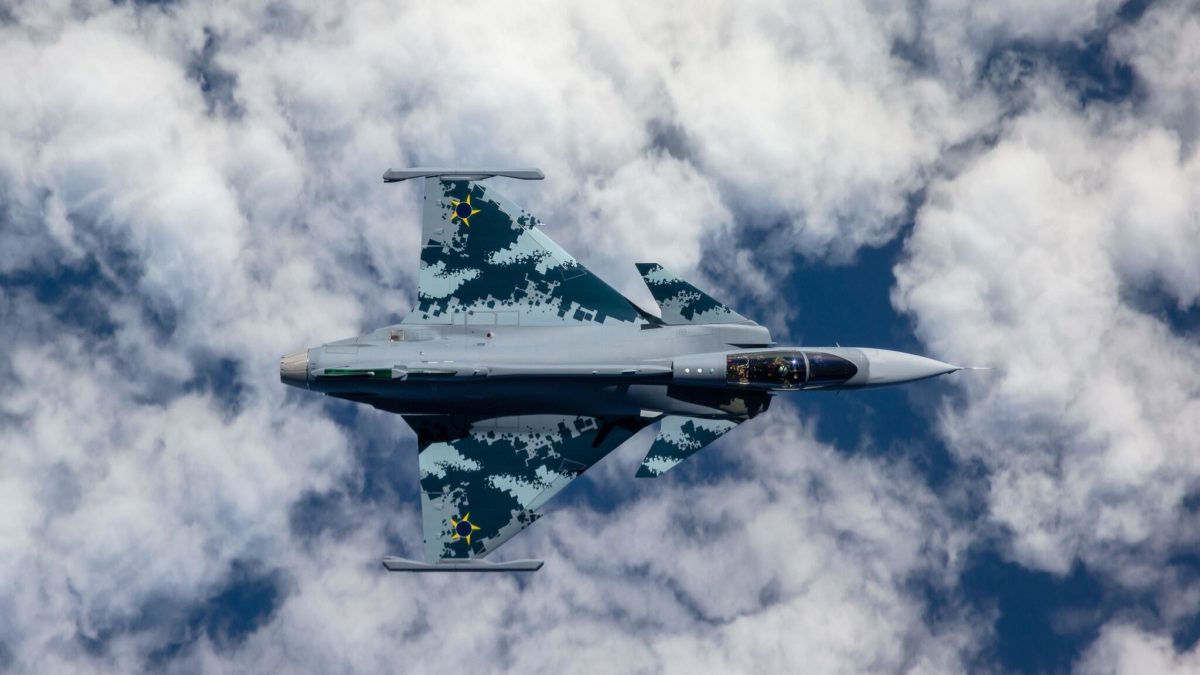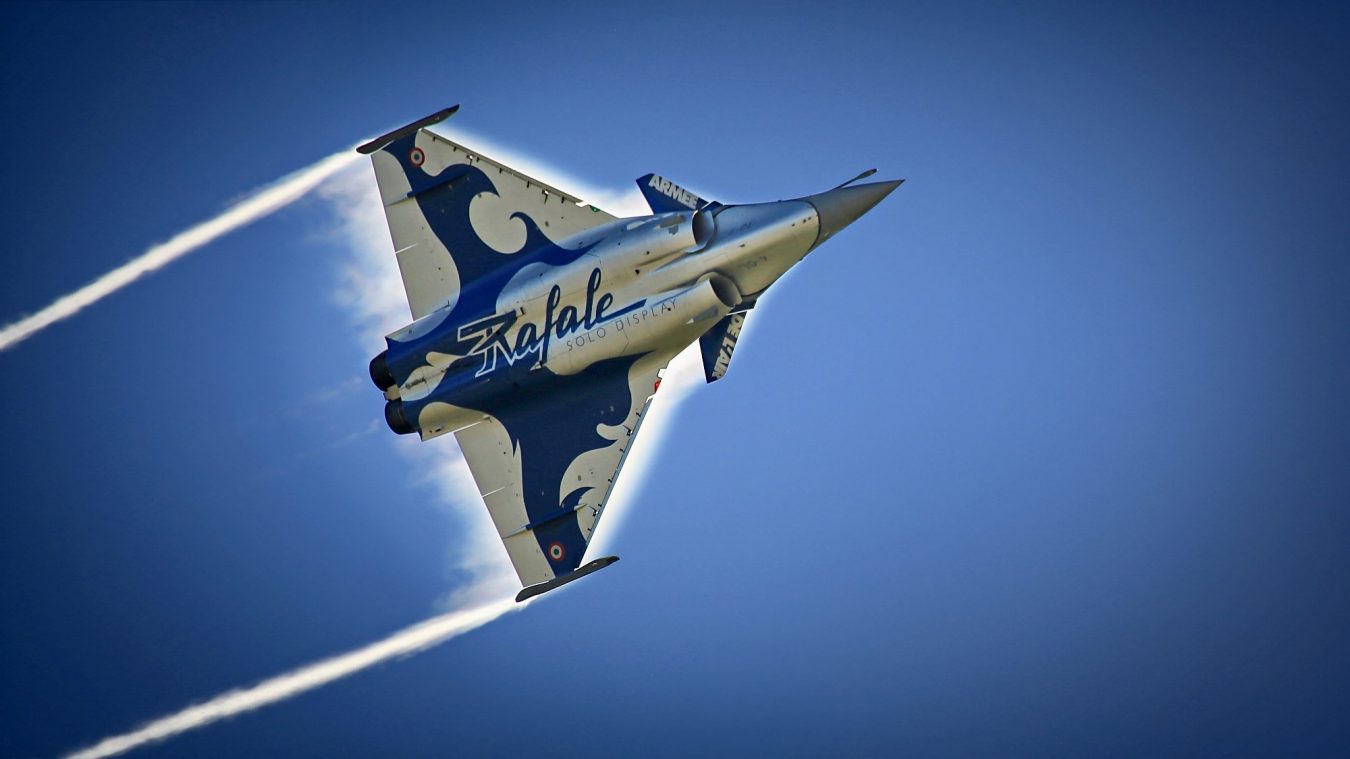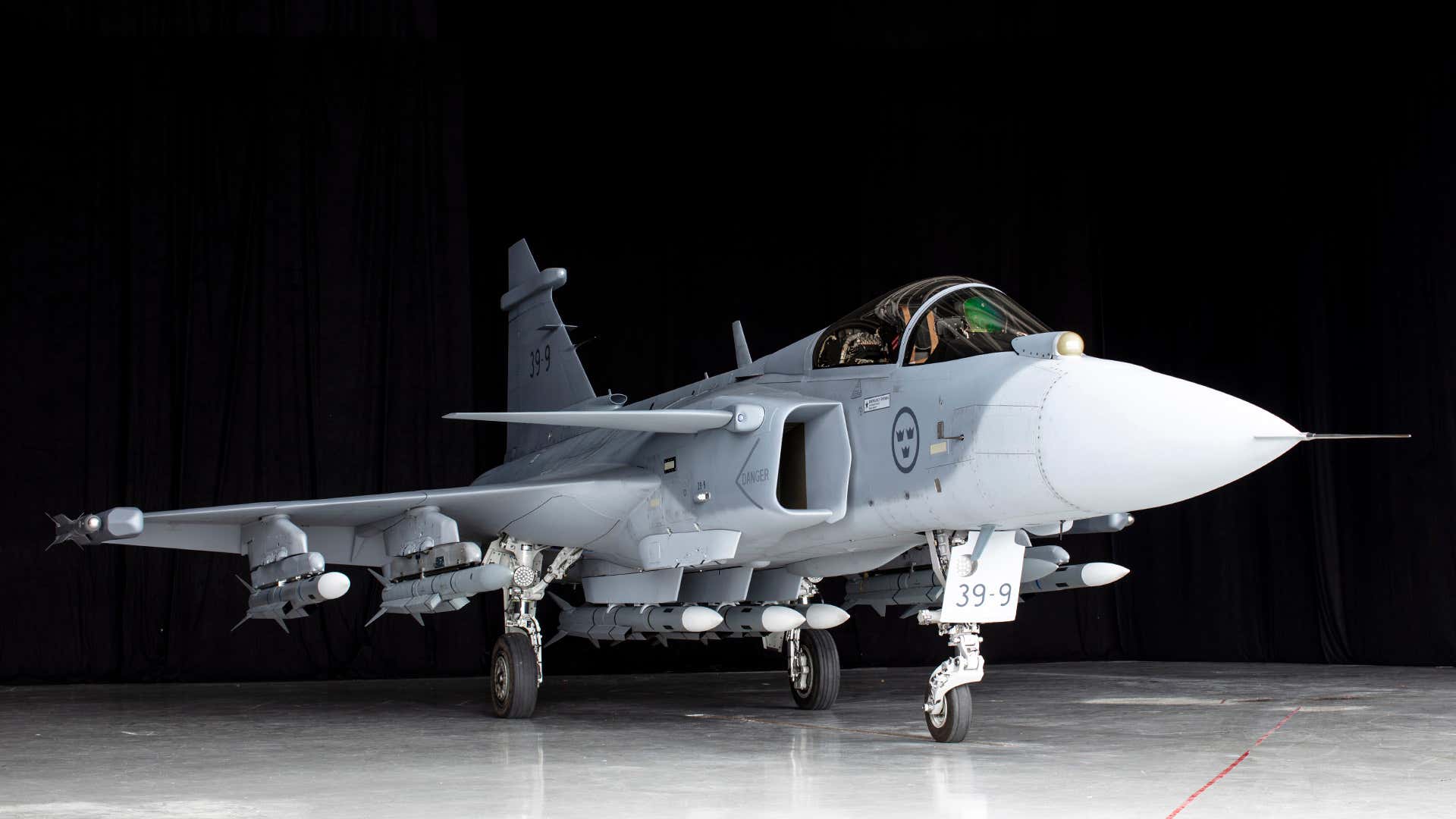The Indian Air Force’s search for the next multirole aircraft is intensifying, with countries vying for India’s mammoth 114 Multi-Role Fighter Aircraft contract. While the Rafale is often regarded as the frontrunner in this race, the SAAB Gripen is perceived as the dark horse by many experts.
Battling A ‘Numerically Superior’ China, Why Indian Army Desperately Needs ‘Exorbitantly Priced’ US Military Weapons
India has been looking for a 4.5 generation aircraft as part of the modernizing effort of its Air Force over the past few years. The IAF’s fighter strength is diminishing, prompting this procurement, dubbed MMRCA 2.0.
The new fighters are planned to replace the aging fleet of MiG-21s, Mirage 2000s, and Jaguars. Out of a sanctioned strength of 42, the IAF presently operates 32 squadrons. The aerospace giants, including Lockheed Martin’s F/A-18 and F-21, Dassault Rafale, MiG-35 and Sukhoi-35, Eurofighter Typhoon, SAAB Gripen are key players vying for the lucrative contract.
SAAB Gripen
Rafale is the favorite aircraft for the contract, according to a recent survey conducted by EurAsian Times, and is favored by many defense experts. SAAB Gripen on the other hand could be seen as the cheapest and a counterweight to French Rafales.
The Gripen fighter plane was also one of six contenders in the hunt for the earlier MMRCA deal for 126 fighters, which ultimately resulted in India purchasing 36 Rafale jets in flyaway condition.
SAAB has been aggressively lobbying to get this deal. In June 2021, Swedish defense minister Peter Hultqvist made a strong appeal to the Indian government for the new Swedish fighter jet, stressing that the contract was “100% supported by his government.”

On March 5, 2021, India’s Prime Minister Narendra Modi held a video conference with his Swedish counterpart Stefan Lofven, during which the two leaders are said to have discussed key issues such as the sale of Gripen fighter jets. The company is pitching its latest model Gripen E for IAF.
The Single engine Gripen has been chastised in the past for its raw performance. The Gripen E is bulkier than its predecessor, with more pylons and fuel capacity, but this is countered by a more powerful engine, the GE F414, which replaces the F404 in previous models.
Referring to the Gripen’s performance in MMRCA, Air Marshal Pranab Kumar Barbora (Retd), told The EurAsian Times, “the SAAB Gripen was not fully developed during MMRCA tender. We carried out the trials, and the jet didn’t come to the level that we were expecting. Now that they have had adequate time — over 15 years — they would have definitely tightened up whatever loose ends there were, giving the Gripen a good chance in the game.
The Gripen E may have a similar appearance and feel to previous variants of the fighter, but it represents such a substantial advancement that SAAB contemplated giving it a whole new name. The E-Series, as it’s now known, continues the legacy of the original Gripen A single-seat and B two-seat models.
Advanced EW Technologies
Electronic warfare has become a major part of today’s combat scenario. It has progressed dramatically since the days of basic radio communication jamming. To obtain an advantage in conflict, air forces around the world are striving to manipulate and potentially control the entire electromagnetic spectrum.
US Clears $14B Sale Of F-15 Air Superiority Fighters For Indonesia A Day After Jakarta Signs Mega Deal For Rafale Jets
SAAB claims that the EW suite is seamlessly integrated on every Gripen aircraft, allowing pilots to act independently without the assistance of a dedicated EW aircraft. Moreover, Gripen E was the first fighter jet to have an AESA radar placed on a rotating swashplate or repositioner.
This extends the AESA’s range and allows the pilot to aim at a target without actually pointing at it. This also reduces the likelihood of an adversary launching a missile at the aircraft. The swashplate enables the pilot to launch a missile beyond visual range and then turn 90 degrees. It also provides mid-course updates to the missile fired. This is a tremendous tactical advantage when used in conjunction with the Meteor.

The Gripen E does not include any geometric stealthy design characteristics, as SAAB believes that as software and hardware technology advances, stealth aircraft will eventually become more apparent to radar systems.
The manufacturer claimed to provide the aircraft with a digital shield. The objective was to build and enhance the system in a constant and dynamic manner in order to address perceived threats. The incorporated EWS, which is paired with a 360-degree spherical missile approach warning system, integrates active and passive systems to assist safeguard the aircraft.
Given India’s vast borders, which require intensive surveillance and security in the face of regular security threats, the country undoubtedly requires a fighter that can spend less time in the hangar. In this regard, the Gripen has an advantage since it does not require complex infrastructure to function.
Additionally, the Gripen engine can be changed in less than an hour by a small team of technicians, refueling takes around ten minutes, and the fighter may be ready for the next air-to-air operation in ten minutes.

Gripen – An Affordable Option for India?
SAAB made a sweeping pre-tender proposal for an Indian order for 114 fighter planes, claiming that its Gripen E single-engine fighter is offered for half the price India spent for the Rafale. India is expected to launch a global tender in the first half of this year, according to SAAB.
The Rafale is a larger, twin-engined aircraft with a higher price tag, but SAAB is touting its single-engine aircraft as a far less expensive alternative. SAAB also revealed its price bid from last year, which it offered to Finland to demonstrate its claim of a substantial price advantage.
Barbora previously told EurAsian Times, “the Gripen will not be at a disadvantage due to being a single-engine aircraft. This is because the technology has advanced to such a large extent that the reliability factor of the aircraft has improved many, many times.”
This weapon system for SAAB Gripen is similar in capability to the one bought by India in the 7.8 billion Euro Rafale aircraft agreement. The Meteor, IRIS-T, KEPD-350 Taurus, and Spear are among them. In addition, Gripen E has apparently been engineered to harvest maximum performance without bending the cost curve, as compared to its competitors.

The company stated, “Gripen is cost-effective not just in terms of procurement, but also of their life-cycle cost. When you buy an aircraft fleet that should last for 30 to 40 years, the life-cycle cost becomes very important due to the amount of money invested.”
Nitin J Ticku, a strategic analyst and co-founder-cum-Managing Editor of EurAsian Times, believes that despite Rafale fighters being favorite of the Indian Air Force, New Delhi cannot afford 126 of them. Swedish SAAB Gripen fighters are an appealing option but Sweden lacks the political clout like France. India would be keenly evaluating the development of Russian ‘Checkmate’ which is touted as a fifth-gen aircraft.
SAAB has also indicated that the Gripen’s offer to India will entail more than merely relocating assembly lines. They will set up a system that incorporates all industrial aspects associated with the development and production of the Gripen.
“Because of high availability and low cost of operations, with the same fleet size and budget (as any other modern fighter), Gripen can bring the IAF four times the airpower,’’ says Jussi Halmetoja, Operations Adviser of Air Domain at SAAB Aeronautics, and a former Gripen pilot.
SAAB Gripen – Advanced Cockpit & Sensor Fusion
The pilot sits in front of a completely new cockpit layout to monitor all of these advanced systems. After lengthy consideration, the Swedish Air Force has decided to equip the Gripen E with a single Wide Area Display (WAD). This is a progression from the Gripen C/D cockpit’s three huge monitors.
SAAB has spent a lot of work fuzing the Gripen E’s sensors and presenting large amounts of data to the pilot in a simple and straightforward manner. The Targo II Helmet Mounted Display (HMD) has been chosen by SAAB for the Gripen E. The cockpit, unlike the F-35, combines the HMD and WAD with a Head-Up Display (HUD).
Human-Machine Collaboration, according to SAAB, is the next factor in establishing the ability of the platform and pilot to work together, boosting sensor fusion, mission adaptability, and even learning capabilities. The Gripen also has incorporated simulated training scenarios when it comes to training.
- Contact the author at ashishmichel@gmail.com
- Follow EurAsian Times on Google News





